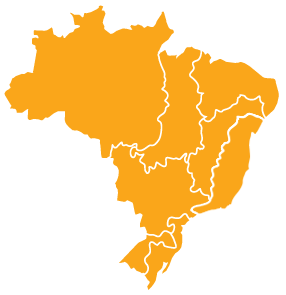Dona¹ Terezinha Aquino da Silva, 80 years old, has forever and ever, since before coming to this world, resided in Missão Sahy, this small village that eventually became Senhor do Bonfim, a town in northern Bahia which is inhabited more by stories than people.Upon arrival, we soon sight Dona Terezinha walking slowly, hands behind her back, watching the passersby. When Nando, a teacher who is accompanying us, greets her by calling her name, there is need for nothing else to engage in conversation.It’s funny how talking to this Terezinha reminds me of talking to my grandaunt also called Terezinha – to my grandparents Carmelita, Ms. Belinha, Seu² Quica and the only nicknameless one, grandpa Francisco. It is always the same: the smiles come hand in hand with complaints. During the conversation, she said repeatedly “I was once a person, sweet girl, now I’m nothing really”. Like my grandfather, who always replies: “I’m not, well, really well, but ill say I am to see if it makes things better”. I find it interesting that this eagerness to tell about the hardships, weaknesses and illnesses go so well with their hospitality, with the “Sit down and have a cup of coffee? C’mon, at least a glass of water”. There is no bitterness about it.Back to Missão Sahy, Dona Terezinha, inbetween complaints of aches, naturally occurring with her age and made worse by the lack of resources for a proper treatment, told us a bit about this place built on faith, magic and gold. The Jesuits arrived in the XVII century to find there was a place sheltered from the eyes of the Portuguese crown, where they could live in peace, hoard the region’s abundant gold and, of course, seek out indigenous people to convert to christianity.Our narrator recounts being the granddaughter of an indian who used to call herself “dog prey”. She says that because the white men’s hounds hunted down the indigenous people in the forest and exposed them, who, in turn, were incarcerated until they got more “amenable”.It seems, however, that these indians weren’t so keen on abandoning their own beliefs and to this day, they communicate with their descendants. Amongst many stories that permeate this place, there is this one about a man who, like many others, dreamt about a caboclo³, but him, being braver than the rest, decided to pursue this dream, literally. The old caboclo told him to dig right under the doors to the cemetery and so he did. While the other men were afraid to walk among the dead, he wasn’t and for that, he found his prize: a bag of gold. He left a wealthy man, bought cars, land, motorcycles… Dona Terezinha said the caboclo has told her to go and get his necklace, that there was no danger and it belonged to her now, but she prefers not taking the chance. What is given, can be charged for, can’t it? There are stories about mermaids, curses, but the populace’s fear protected the Jesuit’s gold. After the uncovering of the Jesuits’ “evasion of the crown’s taxes”, as we might put it, things became complicated and the region stagnated, but many believe the indians cursed this land and the people that caused them harm. Dona Terezinha, like the other elders of the town, keeps the memory of these stories and mysteries alive. She is the keeper of the cemetery’s keys, a deeply symbolic position, and keeps a smoking pipe, relic from a time of riches for the Portuguese and slavery for indians. What remains after all this time is the syncretism, the mixture of catholic faith, symbolized by the church still standing at the heart of the town, with the indigenous beliefs that also survive, but within the people, especially at night, when everyone is
1 A treatment pronoun (derived from the Iberian nobility treatment pronoun “Don”) which is both respectful and, in contemporary Brazilian context, rustic. Specific to women, it is most commonly used to refer to the elderly ones.
2 A treatment pronoun (a corruption of “Senhor” which means “Mister” in English) which is both respectful and rustic. Specific to men, it is most commonly used to refer to the elderly ones.
3 “A person of mixed Indigenous Brazilian and European (mixed Indigenous Brazilian and black ancestry is “cafuzo”) or a culturally assimilated person of full Amerindian descent.”
http://en.wikipedia.org/wiki/Caboclo


